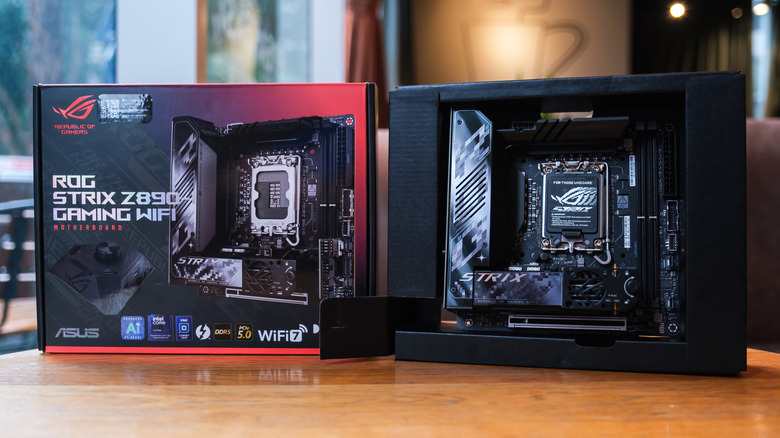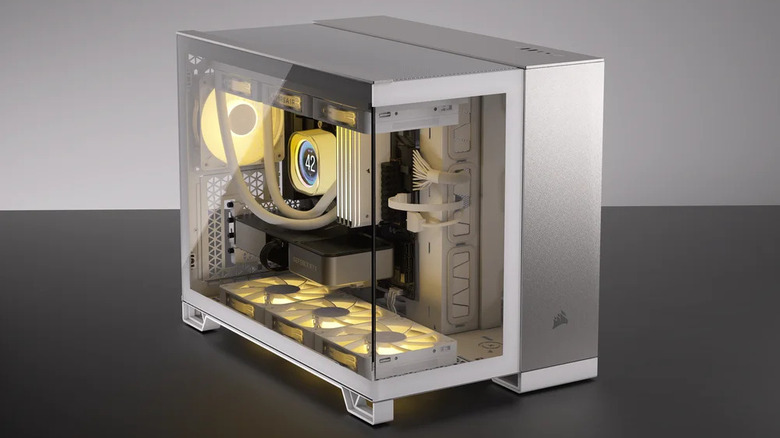Can You Use A Mini-ITX Motherboard In An ATX PC Case?
Motherboards are one of the first things PC builders lock in before any build. It sets the rules for what kind of case you'll need, how much RAM and storage you can install, and what kind of CPU is even on the table. One of the key things that separates them — and affects the rest of the build — is their physical size, also known as form factor, and it affects everything from airflow and upgrade path to whether the motherboard is compatible with the case.
The most widely used form factors are Mini-ITX, Micro-ATX, Standard ATX, and Extended ATX (or E-ATX). Micro and Standard ATX are still the most common, but Mini-ITX has grown in popularity in recent years for its portability, aesthetics, and small-footprint builds. However, despite being made for smaller form factor cases, a Mini-ITX board can be used in Standard ATX cases without a problem.
The mounting holes and rear support bracket all follow the same layout. The only real difference is visual since your case might look a bit empty with a motherboard that was theoretically supposed to be in something much smaller. Whether that mismatch is a problem or not depends entirely on the builder's preference.
When you should and shouldn't use a Mini-ITX Motherboard in an ATX Case
There's a right time and place for every form factor. Mini-ITX motherboards really have one job: to deliver a fully functional system in the most compact form possible. And in that role, they are excellent, but that doesn't mean they can't work in a larger ATX case. Even though that isn't a typical setup, there are a few good reasons for you to go this route, depending on your situation. If you prefer extra airflow room or just more space during the build, using a Mini-ITX motherboard in an ATX case can make your life easier.
Plenty of builders also treat this combo as a temporary setup, using the ATX case now, until the right small form factor (SFF) case or budget comes along. Not every ATX case can pull this off without making the smaller board look out of place inside an oversized, almost ridiculous-looking PC case – especially noticeable if your case has a tempered glass panel.
But even if you can live with the empty space, you can't ignore the obvious. Most Mini-ITX motherboards ship with fewer USB 3.0 headers compared to ATX boards, which power up a couple USB-A ports on the front (or top) of the case. ATX cases, however, often come with an extra pair of USB-A ports. Without additional headers to connect to, those ports sit unused. Expansion cards could help, but Mini-ITX boards only have one PCIe slot . If your GPU already occupies it, there's nowhere left to put them. So, unless you're okay with leaving half your front I/O unused or dealing with adapters, there's not much you can do.

